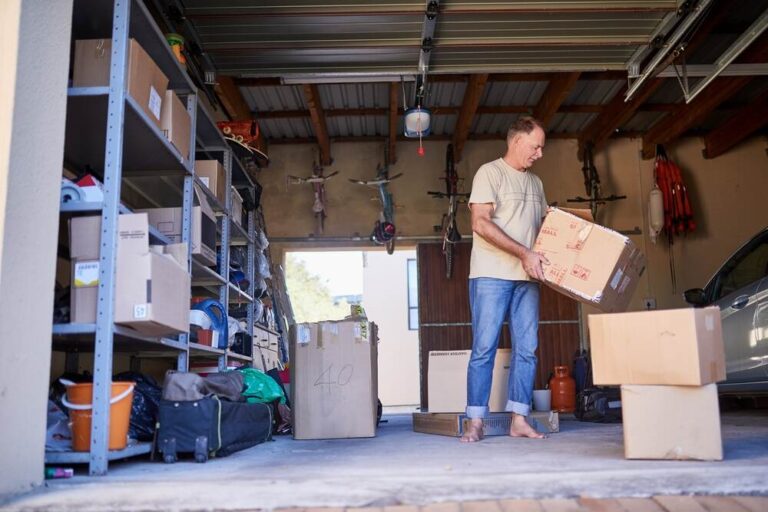Clearing out and organizing a garage can feel like an overwhelming task. For many, it becomes a dumping ground for all the items that don’t fit neatly into the home. However, with a thoughtful strategy and some determination, you can transform this space into a functional and tidy area. Here’s a comprehensive approach to tackling the challenge of garage organization.
Preparation: Setting the Stage for Success
Before diving into the work, proper preparation is essential. Start by selecting a dedicated time to focus on the project. A weekend or a full day without distractions is ideal for making real progress. Once you’ve set aside this block of time, gather all the supplies you’ll need. Items such as garbage bags, storage bins, labels, markers, gloves, and cleaning supplies are indispensable for the task ahead.
Planning how to categorize your items will also make the process smoother. Categories could include ‘Keep’, ‘Donate’, ‘Sell’, ‘Recycle’ and ‘Trash.’ Having a clear vision of how you’ll sort everything helps prevent decision fatigue and ensures that every item finds its rightful place.
Decluttering: The Heart of the Process
To truly understand what you’re working with, begin by emptying the entire garage. If the weather and space permits, move everything outside or to a clear area in your driveway. This step creates a blank slate and allows you to fully assess the space and the items it holds.
As you sort through your belongings, group similar items together. Tools, sports gear, seasonal decorations, and gardening supplies are just a few examples of categories you can create. Once items are grouped, you’ll need to make decisions about what to keep and what to part with. Be honest with yourself during this process. Retain only items that are useful, functional, or hold sentimental value. Broken, expired, or unnecessary items should be disposed of responsibly.
For things in good condition that you no longer use, consider donating or selling them. Old bicycles, duplicate tools, and unused sports equipment can find new homes where they’ll be appreciated. Test equipment and devices to ensure they still work before deciding whether to keep them. This step not only helps you declutter but also prevents storing items that no longer serve a purpose.
Proper Disposal: Handling Special Items
Disposing of certain items requires extra care due to their environmental impact. Batteries, for instance, should be recycled at designated collection points. These are often found at hardware stores or recycling centers. Hazardous materials like lubricants, paints, and chemicals must be handled properly. These substances should never be poured down the drain, as they can cause environmental harm. Following your local area’s rules for hazardous or chemical waste disposal.
Similarly, aerosols and fluorescent tubes require specific disposal methods. Empty aerosol cans can typically be recycled with metal, but partially full cans need to go through hazardous waste programs. Fluorescent tubes, which contain mercury, should be taken to collection sites to ensure safe handling.
Cleaning and Revitalizing the Space
Once your garage is empty and sorted, take the opportunity to clean it thoroughly. Sweep the floor, remove cobwebs, and deep clean any surfaces where items will be stored. If you want to go a step further, consider applying an epoxy coating to the floor or adding floor mats. These upgrades not only improve the appearance of your garage but also make future cleaning easier.
Organizing for Efficiency
With a clean and empty space, you can now focus on organizing your garage in a way that maximizes functionality. Installing storage solutions is key to keeping everything in order. Wall-mounted shelves, lockable cabinets, and pegboards are excellent options. They forget items off the floor and within easy reach. Overhead storage racks can free up more accessible areas for things you use regularly.
Using clear, labeled bins is another effective strategy. These allow you to see what’s inside at a glance and keep related items together. Creating zones in your garage is also a smart way to stay organized. Place frequently used items like bicycles and tools near the entrance for easy access. Seldom-used equipment (or seasonal home decorations) can be stored in harder-to-reach areas. If you have a hobby or enjoy DIY projects, consider dedicating a section of the garage to a workshop, complete with a workbench and tool storage.
One of the most underutilized aspects of garage organization is vertical space. Installing hooks on walls for ladders, hoses, and garden tools is a simple way to create additional storage. Magnetic strips can hold small metal tools like screwdrivers and wrenches. By thinking vertically, you’ll make the most of your garage’s storage potential.
Maintaining Your Organized Garage
Follow this step-by-step approach, and you’ll transform your cluttered garage into a clean, and organized space. Not only will you enjoy the satisfaction of a job well done, but you’ll also find it easier to locate and access the items you need. With regular maintenance, your garage will remain a well-organized part of your home for years to come.

